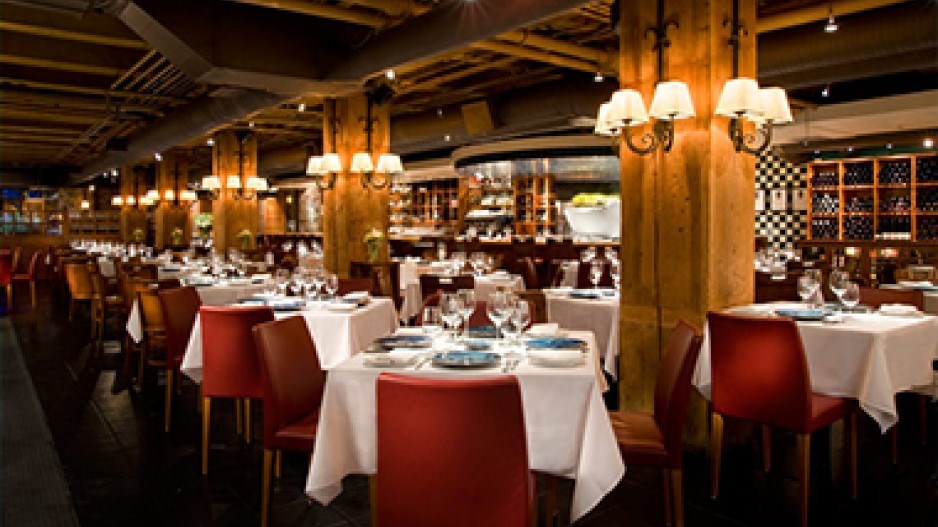Last spring, Vancouver's Blue Water Café + Raw Bar made an energy-efficiency upgrade that a lot of restaurants could do: they changed many of their MR16 halogen lights to LED MR16s.
Stephan Cachard, Blue Water Café's restaurant director , says that they were looking to reduce their large energy bills, which were running at $7,000 per month. After working with an electrician to be sure their equipment was working properly and nothing was overloaded, Cachard decided to upgrade some of the restaurant's lighting.
Previously, 70% of the restaurant's lighting scheme was 20W halogen MR16s. "These were not really efficient," says Cachard. "Also, they were not under warranty. The bulbs only cost seven dollars each, but I looked through my records and in the last 15 months I've changed 319 of them."
Cachard researched alternatives and found new LED lights from General Electric. "[The LEDs] are under warranty for three years and only consume seven watts," says Cachard. "Also, they are supposed to last 25,000 hours, which would be three years of nonstop use."
The first step in the upgrade was to change the lighting in one of the restaurant's private function rooms. And that's when they encountered a problem. The lights in the room are usually on for eight or nine hours a day, and are all on dimmers. When the LED bulbs were dimmed with the existing dimmers, it caused a rapid strobing effect.
An electrician helped them find dimmers that were compatible with LEDs, and solve the problem. To date, the restaurant has changed over 100 halogens over to LED, including the lights on the patio, with just the main dining area left to do.
Blue Water Café has been working on its lighting upgrade in sections. This minimized the disruption and spread out the up-front costs.
Each table at the Blue Water Café has its own spotlight, and elsewhere spotlights are used to highlight art and flowers and some special wines. The atmosphere is of critical importance to the dining experience and must be warm and inviting. But Cachard says the cooler colour of the LEDs has not been a problem. "When you change over from warm lights to cooler ones, the impact depends on the design of the room and the colours," he says. "We are using directional, narrow lights on the tables and we have warm beams and colours in the dining areas, so it hasn't been an issue for us."
Blue Water Café is going to continue its energy saving efforts, with work already underway to replace 82 40-watt incandescent lamps with dimmable, warm-white, 12-watt LEDs. The new lamps come with a two-year warranty and an expected 25,000 hour lifespan.
Cachard offers this advice to other restaurant managers looking to make the switch to energy-efficient lighting: "It comes down to consumption. If your consumption isn't high, maybe you want to keep things as they are. But if your consumption is high, then something needs to be done," he says. "There's the environment too. That is something I'm worried about. And this is a change that has worked for us here."
The dollar savings add up. In the past, business owners have received an average incentive of $3,174 by implementing an energy efficient upgrade project, like Blue Water Café. The incentive plus the money you save on energy bills each year means you can reinvest back into what matters most – your business.
Five minutes is all it takes to get started or to request more information about your potential savings. Visit bchydro.com/express.




